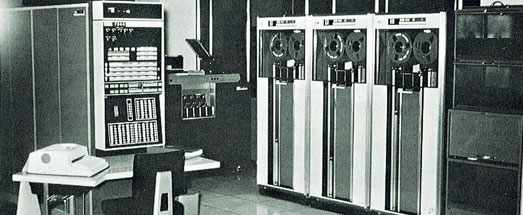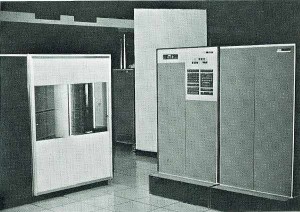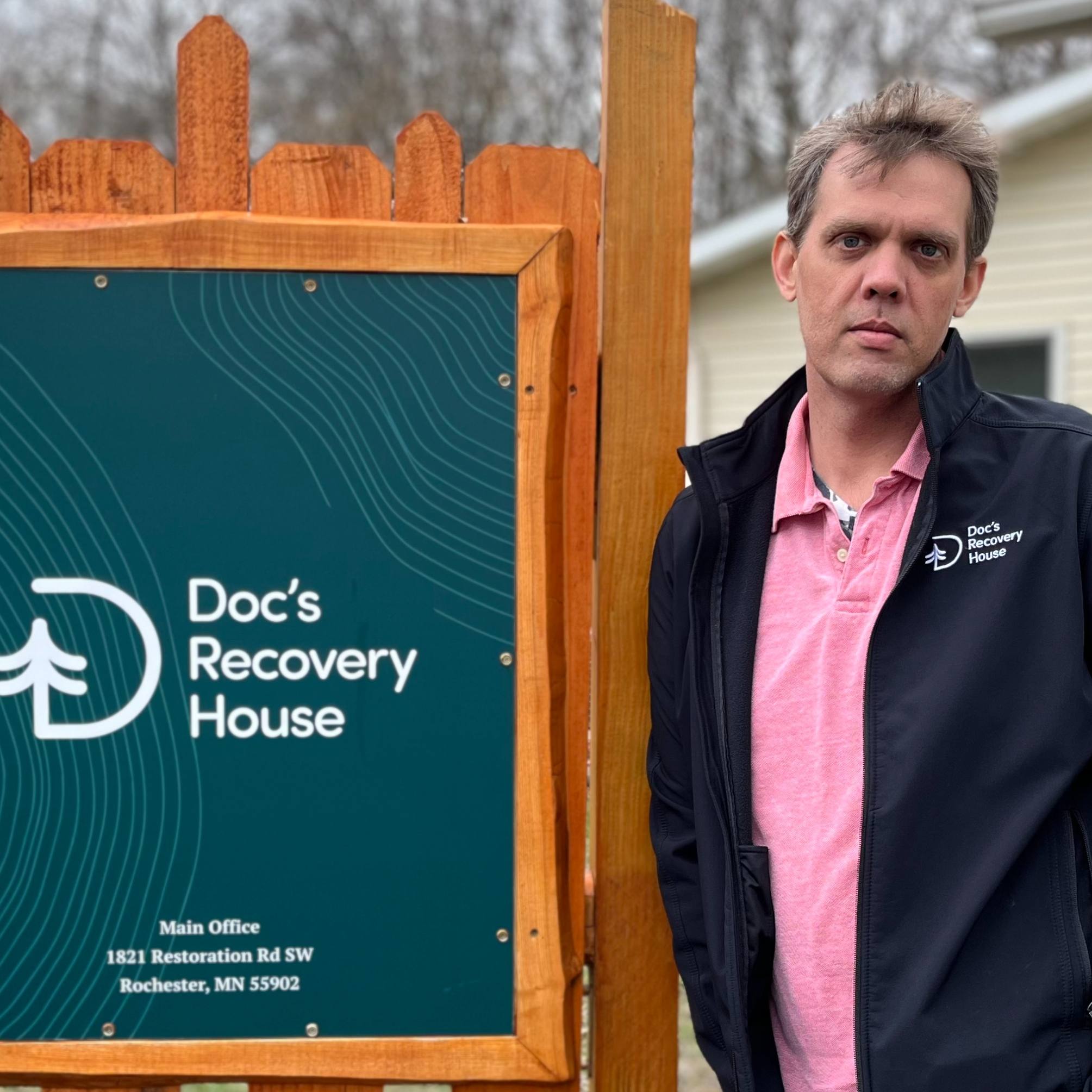-
#ThrowbackThursday: 7040 Computer Installation Underway

This article first appeared December 18, 1964 in the publication Mayovox.

Installation is now underway at Harwick Building of the new IBM 7040 computer system. Notification last June of approval of grant application to finance procurement of the 7040 triggered the present building program at Harwick to provide space for a new, expanded computer facility. Fifth floor, and part of fourth floor in Harwick are assigned to the facility and construction in this area is now nearing completion.
When the 7040 is in operation it will replace the IBM 1620 computer at Medical Sciences, procured in mid-1962 under a rental contract also financed by USPHS grant. Application for this grant contained an accurate forecast of the future. It stated: “If in the future the demands and requirements of our research staff exceed the capabilities of the IBM 1620 we would plan to submit a supplementary application… for a computer of greater capacity…”
For the past two years the 1620 computer has been in use virtually twenty-four hours a day, seven days a week. In spite of this a large backlog of research has accumulated and some projects have been curtailed.
The components of the 7040 computer system (see page 3) to the casual observer appear neither larger nor more complex that the array of devices now in operation at Medical Sciences. However, the vastly greater capability of the 7040 as compared to the 1620 is obvious in an example given in the supplementary application for grant:
“…estimates of computer time required to complete the program in cardiovascular physiology… range from four to eight 1620’s all running simultaneously. Even if there were eight IBM 1620’s available, many of the answers would be generated so slowly that they would be of limited value. The 7040 is roughly 30 times as fast as the 1620 and far more versatile than thirty 1620’s would be…”
One of the purposes for which the first computer system was procured has in good part generated the demand which has made the 1620 obsolescent. That is the training program for members of staff and fellows who wish to explore the application of the computer to their particular research fields.
Classes in computer application predated procurement of the 1620 by several years and have been continued, though at present they are limited by lack of available computer time. The grant application notes that “the training program has stimulated an interest in the application of mathematics (other than statistics) to problems in biology and medicine. It is necessary, if these training programs are to be successful, that there be computer time available for the research staff and fellowship group to execute the programs they develop…”
Dr. Eugene Ackerman is director and biomathematical consultant and Mr. Pete Mataya, manager, of the unit which will be designated “The Mayo Foundation Computer Facility.” A staff of approximately seven persons will be assigned full time to the facility. Members of the staff engaged in research using the computer will also spend considerable time in the department as will their technical assistants.
The Computer Facility Committee, whose members are Dr. H. P. Rome, chairman, Drs. Ackerman, R. C. Bahn, J. L. Juergens, J. W. Rosevear, E. H. Wood and Mr. K. J. Ladner, is concerned with matters of facility policies and will plan for future facility activities and equipment.
One such plan in 1965 will make it possible for laboratories in Medical Sciences to have direct on-line use and control of the computer located in the Harwick Building.
Looking also to the future the Research and Laboratory Committee (to which the Computer Facility Committee is responsible) has approved tentative arrangements (governed in part by possible future USPHS grant application approval) for procurement of additional and still more sophisticated computers late in 1965 and in 1966.
Photo caption: These two photographs show the main components of the IBM 7040 computer system. The card reader and punch are made at IBM Rochester; other parts were shipped here from IBM plant in Kingston, N.Y. Installation is by IBM systems engineers from the St. Paul branch.







